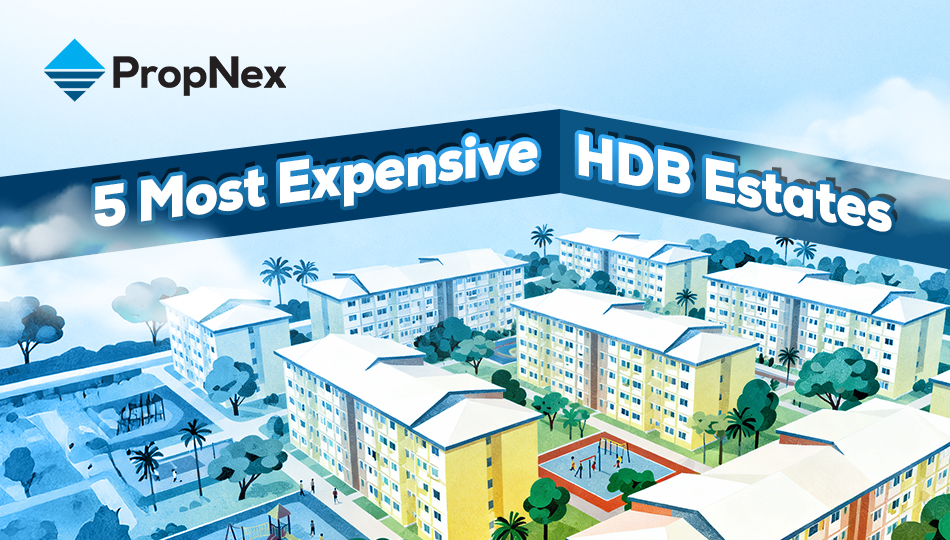Is the Retail Market Finally Turning a Corner in 2023?
By Jean Choo
The retail property market has endured many challenges over the last few years. Since e-commerce and online shopping gained traction, many brick-and-mortar stores have had to re-invent themselves to stay relevant. Over the past years, e-commerce/digital shopping platforms have seized a share of consumers’ wallet, by offering convenience and access to a wide range of products within the comfort of their homes. The Covid-19 pandemic lockdown also helped to further proliferate online shopping and food delivery.
Challenging decade of curveballs and wildcards
While retailers and landlords were starting to adapt to the increasing prominence of e-commerce, they were dealt another curveball – the COVID-19 pandemic – which saw malls becoming ghost towns and stores being shuttered. By the end of 2020, landlords saw retail rentals plunge by 15%. As the pandemic eased and borders gradually reopened, the market finally saw light at the end of the tunnel. As of Q1 2023, the rental index for retail space was down by nearly 23% from the last peak in Q4 2019 (see chart 1) – while the decline of retail rentals has slowed significantly since the end of 2021, it has yet to show signs of bottoming.

The retail property market has endured many challenges over the last few years. Since e-commerce and online shopping gained traction, many brick-and-mortar stores have had to re-invent themselves to stay relevant. Over the past years, e-commerce/digital shopping platforms have seized a share of consumers’ wallet, by offering convenience and access to a wide range of products within the comfort of their homes. The Covid-19 pandemic lockdown also helped to further proliferate online shopping and food delivery.
Tourism rebound and revenge spending boost confidence for landlords and retailers
While rentals have yet to bottom out, demand for retail space has been growing as Singapore’s tourism industry gradually recovers to pre-pandemic levels. In April this year, international arrivals exceeded one million, even though it remained below the 1.7 million visitors recorded in January 2020, just before the pandemic, according to the Singapore Tourism Board (STB). Year-to-date, Singapore has recorded some 4.04 million visitor arrivals.
Despite China’s border reopening at the start of the 2023, the growth in visitor arrivals from Mainland China has been lacklustre. In April this year, Mainland China took fifth place as a top source of visitors, with just 90,725 visitors. Prior to the pandemic, Mainland China was the top source of visitors. In 2019, Singapore received a monthly average of 300,000 Mainland China visitors. Market watchers suggest that supply-side lags due to pricey air tickets and tight flight capacity, as well as delays in passport renewals have moderated tourist arrivals from China. However, the arrivals are expected to gradually increase towards the second half of the year.
Retail sales also enjoyed steady growth in domestic and tourist receipts, owing to revenge spending post-pandemic and more dining-out. Retail sales grew by 4.5% YOY in March this year. The estimated total retail sales value in March was $4.1 billion, according to the Department of Statistics. Consumers seem unfazed by the slower economic outlook, understandably due to the low unemployment rate and growing wages.
With that, demand for retail space from occupiers expanded over the last few months. In Q4 2022, slightly over 4,500 rental contracts worth $66 million have been signed – the highest figures on record for quarterly rental volume and total rental value recorded in a quarter. Demand for retail space is expected to remain buoyant in the medium-term, particularly for tourist hotspots.

Retail hot spots
With Singapore having fully transitioned to endemic-living with Covid-19, commercial tenants in the prime office districts have also reported better business earnings, as most workers have returned to the workplace. In Q1 2023, most retail spaces in the Downtown Core planning area reported an increase in median rentals on a year-on-year basis. The median rental ($psf) of retail space in the Raffles Place subzone grew by 11.2% YOY while that of retail spaces in the Anson Road area grew by 34% YOY. The vacancy rate of retail spaces in the Downtown Core has also fallen to pre-pandemic levels of 9.8%, though still above its last recent low of 7.2% in Q4 2019 – just before the pandemic outbreak.
Meanwhile, the growth in rentals in the tourist hotspots of Orchard and Chinatown planning areas have been uneven. Rentals of retail space in the Dhoby Ghaut and Tanglin planning subzone grew by 11.5% and 34.4% YOY respectively, while other subzones reported a softening in rentals on a year-on-year basis.

City fringe and suburban malls continued to enjoy consistent growth in occupancies since the start of the pandemic. After peaking in Q2 2020, vacancies have fallen steadily for retail malls in the city fringe and suburban regions. In Q1 2023, the vacancy rate of Fringe Area and outside Central Region malls stood at 7.1% and 4.1% respectively.

Trends and demand drivers in 2023 – post-pandemic euphoria and the power of hype
In 2023, revenge spending has largely dominated consumer behaviour - indulging in travel experiences and luxury goods – driven by pent-up demand despite the economic uncertainties. That said, such post-pandemic euphoria may not necessarily reflect a permanent shift in consumption patterns.
In 2023 and beyond, a significant demand driver for retail space would be pop-up event spaces, which have become increasingly popular amongst businesses with no physical store-fronts. Another key group of tenants are foreign, new-to-Singapore brands that have an established reputation and large overseas consumer base, which may appeal to their shopper fan-base in Singapore.
Hard times over for retailers and commercial landlords – for now
According to the URA, there is a stable supply of retail space in the pipeline. As of the end of Q1 2023, about 224,000 sq ft of retail space was added to the stock – with another 4.4 million sq ft of retail space expected to be complete over the next few years. With no major supply shocks expected over the next 5 years, retail space vacancies and rentals are expected to be stable in the medium-term.
The retail market, particularly malls in the Central Region, will continue to ride on the current influx of travellers with pent-up demand for travel and spending. Also, with the growth of tourist arrivals from mainland China, retail spending is expected to stay elevated for the rest of the year. For retail malls in the CBD, foot traffic and sales could remain healthy with the return to office push enlivening the city.
On the whole, the recovery of the retail market is inextricably tied to macroeconomic conditions and external factors. While the government is not projecting a recession in Singapore in 2023, market watchers are expecting a slowdown in output and spending. Retailers and businesses will need to be cautious about increasing their footprint too quickly. Meanwhile, landlords ought to take steps to ensure the resiliency of their current tenant-mix.

PropNex, which is working with several landlords, has a portfolio of commercial space that are available. Speak to the PropNex’s Commercial leasing team on your space leasing needs today.
Disclaimer:
While every reasonable care is taken to ensure the accuracy of information printed or presented here, no responsibility can be accepted for any loss or inconvenience caused by any error or omission. The ideas, suggestions, general principles, examples and other information presented here are for reference and educational purposes only.
This information contained herein is not in any way intended to provide investment, regulatory or legal advice or recommendations to buy, sell or lease properties or any form of property investment. PropNex shall have no liability for any loss or expense whatsoever, relating to any decisions made by the audience.
All copyrights reserved.












